30+ Sonnet Poem Examples to Download
Poetry, a realm of creativity and emotion, has been a powerful medium for self-expression throughout history. Among the various poetic forms, the sonnet stands as a distinguished and captivating style. With its rhythmic cadence and structured elegance, the sonnet has enchanted poets and readers for centuries. In this article, we delve into the essence of sonnet poems, providing insight into their definition, step-by-step creation process, and some frequently asked questions that shed light on this timeless art form.
1. English Sonnet Poem Example

forgottenbooks.com
2. Sonnet Poem Example

cusd80.com
3. Four Sonnet Poem Example
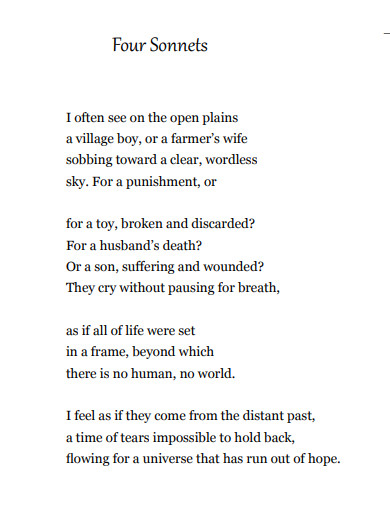
scholarworks.wmich.edu
4. Love Sonnet Poem Example
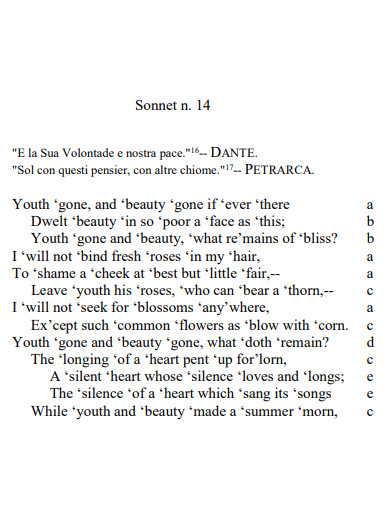
addi.ehu.es
5. Sonnet Poem Worksheet Example

peconicestuary.org
6. Nature Sonnet 18 Poem Example

digitalcommons.trinity.edu
7. Sonnet Friendship Poem Example
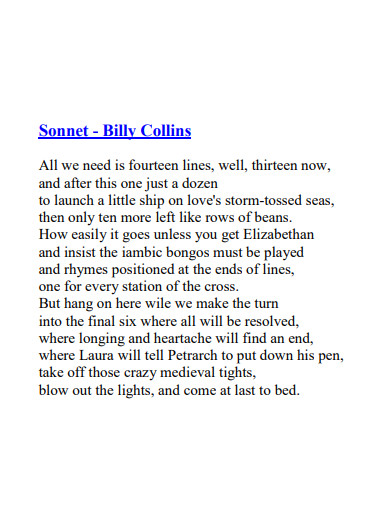
lcsnc.org
8. Sonnet 43 Poem Example
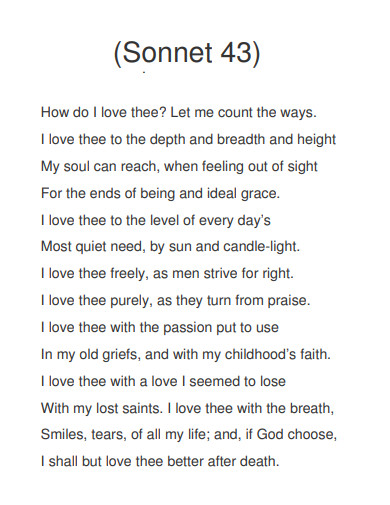
tri-village.k12.oh.us
9. Sonnet Life Poem Example
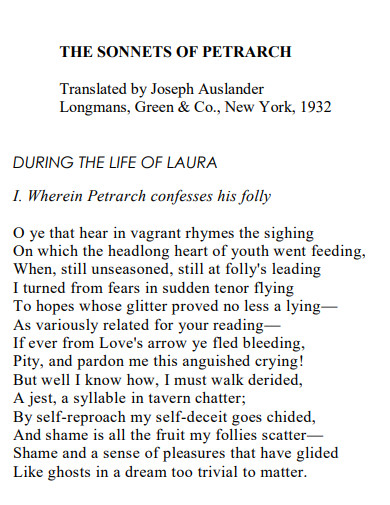
sjsu.edu
10. Easy Sonnet Poem Example

scottishpoetrylibrary.org.uk
11. Sonnet Study Poem Example
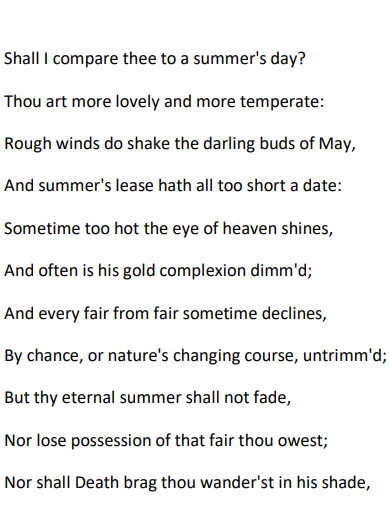
whitcraftlearningsolutions.com
12. 14 Lines Sonnet Poem Example

aisna.net
13. Shakespearean Sonnet Poem Example
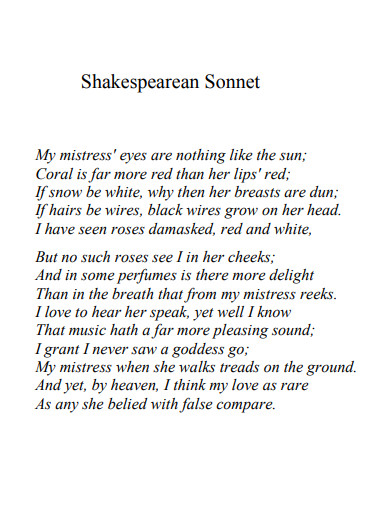
cv.udl.cat
14. Short Sonnet Poem Example
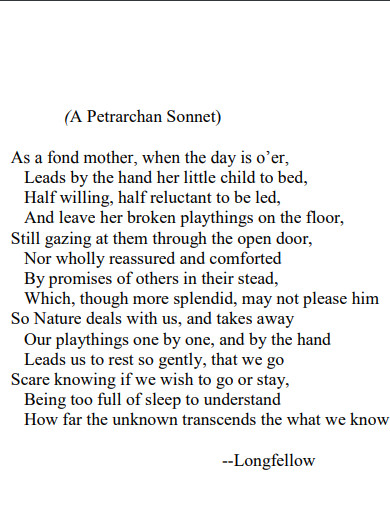
users.scc.spokane.edu
15. Summer Sonnet Poem Example

web4.bilkent.edu.tr
16. School Sonnet Poem Example
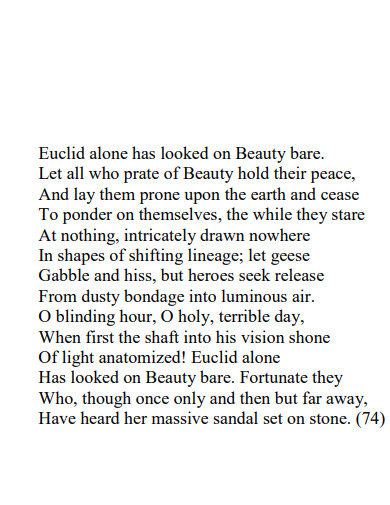
literatureandscience.org
17. Sonnet Lyric Poem Example
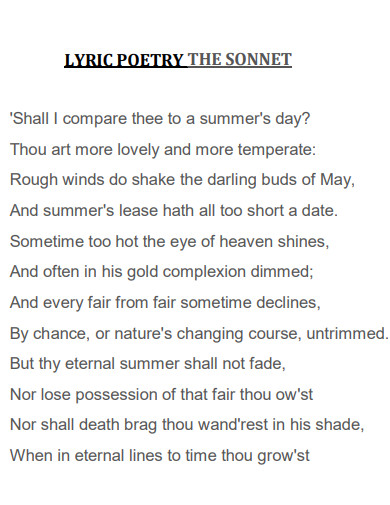
rdscollege.ac.in
18. Family Sonnet Poem Example

dalspace.library.dal.ca
19. Origin of Sonnet Poem Example

henninghomepage.weebly.com
20. Rhyme Scheme Sonnet Poem Example
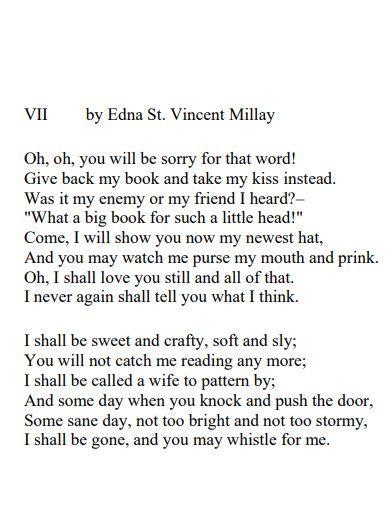
wcccd.edu
21. Facebook Sonnet Poem Example

tc.pbs.org
22. Sonnet 29 Poem Example
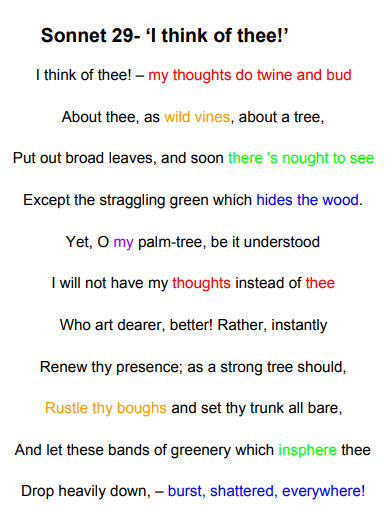
pmt.physicsandmathstutor.com
23. Best Friend Sonnet Poem Example

gyansanchay.csjmu.ac.in/
24. High School Sonnet Poem Example
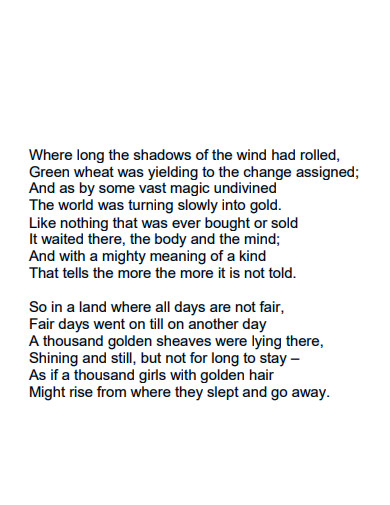
uomustansiriyah.edu.iq
25. Music Sonnet Poem Example

tweetspeakpoetry.com
26. Spring Sonnet Poem Example
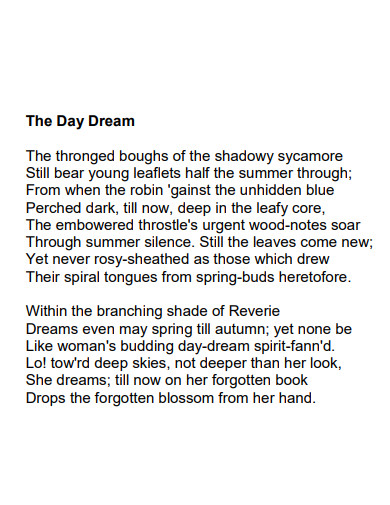
media.vam.ac.uk
27. Soccer Sonnet Poem Example

dcs.k12.oh.us
28. Famous Sonnet Poem Example
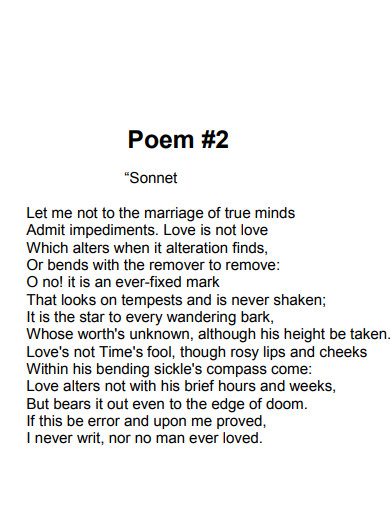
mensaforkids.org
29. Rhyming Sonnet Poem Example
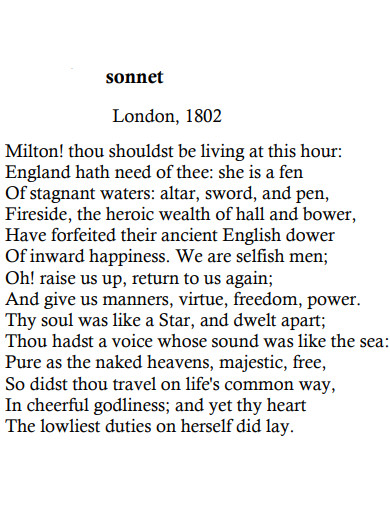
uiltexas.org
30. Basketball Sonnet Poem Example

ijhssi.org
31. Simple Sonnet Poem Example

wcccd.edu
What is a Sonnet Poem?
A sonnet is a lyrical poem of 14 lines, each carefully woven to evoke emotions, imagery, and thoughts in the reader’s mind. This form originated in Italy during the 13th century and has since evolved into various styles, most notably the Shakespearean (or English) and Petrarchan (or Italian) sonnets. Each style has its own unique rhyme scheme and structure, lending a distinct tone to the poem.
How to Write Sonnet Poem
Creating a sonnet poem requires a balance of structure and creative expression. The process might seem intricate, but with dedication and inspiration, you can master this art form. Here’s a step-by-step guide to help you craft your own sonnet masterpiece.
Step 1: Choose Your Theme and Tone
The foundation of any sonnet lies in its theme and tone. Select a theme that resonates with you, whether it’s love, nature, time, or any other subject that ignites your imagination. The tone, or the emotional quality of the poem, should complement the chosen theme. Are you aiming for a melancholic, romantic, or contemplative tone? Consider the emotions you want to evoke in your readers.
Step 2: Understand the Structure
A sonnet comprises 14 lines, typically divided into four stanzas. The first three stanzas contain four lines each and follow a specific rhyme scheme, while the final stanza, known as the couplet, consists of two rhyming lines. In the Shakespearean sonnet, the rhyme scheme of the quatrains is ABAB CDCD EFEF, and the couplet is GG. The Petrarchan sonnet follows an octave-sestet structure with varying rhyme schemes.
Step 3: Brainstorm and Choose Literary Devices
Literary devices like metaphors, similes, and personification add depth and vividness to your sonnet. Brainstorm ideas that fit your chosen theme and consider how these devices can enhance your expression. Avoid clichés and aim for fresh and imaginative metaphors that bring new perspectives to your poem.
Step 4: Develop and Refine
Start crafting your sonnet by writing the quatrains. Focus on maintaining the rhyme scheme while incorporating your chosen literary devices. As you move to the final couplet, consider how it can provide a twist, resolution, or thought-provoking conclusion to your poem. Once drafted, review your sonnet for rhythm, flow, and coherence. Make necessary revisions to enhance its impact.
FAQs
Can I use a different rhyme scheme for my sonnet?
While traditional sonnets follow specific rhyme schemes, experimentation is encouraged. Altering the rhyme scheme can create a unique and modern twist on this classic form.
How important is the context of a sonnet?
Context shapes the interpretation of a sonnet. Understanding the historical, social, or personal context can provide deeper insights into the poem’s meaning.
Can a sonnet have more than one theme?
While it’s advisable to maintain focus on a central theme, skilled poets can weave multiple related themes into a sonnet, adding layers of complexity to their work.
The sonnet, a canvas of emotion and thought, continues to captivate poets and readers alike. With its structured elegance and room for creative expression, crafting a sonnet can be a rewarding endeavor. By selecting a theme, understanding the structure, employing literary devices, and refining your work, you can master the art of sonnet writing. So, embrace this timeless form, and let your words dance across the stanzas, painting vivid images and evoking profound feelings in the hearts of your readers.


